Executive Summary
The first few years of building an advisory firm from scratch are typically the most demanding for solo advisors since this often means putting oneself 'out there' as much as possible – working through lead generation services, trying to network with Centers Of Influence (COIs) and the community at large, and battling through all of the "no" s needed to get a "yes" (and therefore a client). Next comes the challenge of establishing patterns and processes to onboard and retain clients, getting referrals, hiring and training staff, and doing the (very rewarding) work to turn a fledgling firm into a sustainable practice.
However, as the firm matures, many advisors find themselves at the "capacity crossroads", which marks the point when the ongoing demands of running a firm and caring for clients begins to completely fill an advisor's day-to-day schedule and their capacity to continue to find and onboard prospects becomes severely diminished… at least, if the advisor wants to avoid burnout.
There are certainly many aspects to this capacity crossroads, but perhaps an under-discussed factor is that the marketing tactics often used by new business owners to build their advisory firm – COIs, cold-calling, networking, and online referral services – are, in fact, creating blocking points in an advisor's ability to continue to scale their firm's growth. This is because the tactics generally used tend to be time-based marketing tactics, and as the firm's client base and revenue grows, the advisor's time becomes increasingly valuable and in short supply. Furthermore, even though these soft-dollar marketing tactics don't have an associated bottom-line expense that requires payment with hard dollars, they can still be 'expensive' because of how much of the advisor's time they need.
To alleviate this time capacity shortage, advisors have 3 options to reduce time-based expenses and increase money-based expenses, allowing them to regain their (more valuable) time that they can invest into the continued growth of their business. The first is to automate certain tasks/tactics, such as scheduling social media content, project management for recurring tasks, or sending reminder emails for webinars. The second option is to delegate tasks/tactics by handing off certain tasks/tactics to an employee or contractor, often decreasing the soft dollar cost (when the other person's time is less expensive than their own). The third option is to eliminate certain tactics entirely, thus reducing both the hard- and soft-dollar costs.
Ultimately, the key point is that marketing, when limited by an advisor's own time and energy, can only take a firm so far. To get to the next level, advisors can position their firms for success and protect themselves from burnout and overwork by using marketing tactics with decreased dependency on their own time… while still continuing to grow!
In the early years of building a financial advisory firm, most advisors focus on building their firm, primarily by prospecting, which can be a remarkably unglamorous process (especially in the initial days). For advisors building their firms from scratch, this means putting themselves 'out there' as much as possible – working through lead generation services to get prospects, maximizing the number of prospecting calls to find clients, meeting with potential Centers Of Influence (COIs), providing consistently great service to get referrals, networking, and cold-calling.
The day-to-day travails of working through all of the "no"s to get a "yes" can be emotionally taxing, but eventually, momentum begins to build. Over time, new advisors refine their skills and find processes for prospecting that align with how they present themselves and communicate with clients. In return, their number of clients grows, and with an expanding client base, revenue, resources, and the firm also begin to build up.
How The "Capacity Crossroads" Typically Manifests In Advisory Firms
Turning a fledgling firm into a sustainable practice is a notable triumph –but as one problem is solved, new ones inevitably emerge.
For advisors with growing firms, one issue that often manifests is the "capacity crossroads". This crossroads marks the point in which the ongoing demands of running a firm and caring for clients begin to completely fill an advisor's day-to-day schedule, and their capacity to continue to onboard prospects while still working a sustainable number of hours is severely diminished. The capacity crossroads typically strikes at around $200k–$300k in revenue or 30–40 clients and, at this point, advisors face an important decision: Do they continue with their own (reduced) work capacity and scale as best as they can around their essential responsibilities, or do they bring in their first hire (or 2) to continue scaling their growth?
Those who choose to hire staff are rewarded with more time as a resource to leverage (e.g., a firm with 2 employees and 1 owner has the equivalent of 120 working hours in a standard workweek; a solo advisor 'just' has 40 [assuming they keep to a standard workweek as a solo advisor]). However, while a firm that hired employees may gain more time in the aggregate, simultaneously growing a team and firm yields new demands that often boil up to the advisor/leader: the new employees need training, performance reviews, and growth paths; the growing number of clients need routine meetings, investment updates, and account maintenance; and prospects with more complex needs begin to show up.
In fact, while hiring staff was supposed to free up the advisor's time, Kitces Research on How Financial Advisors Actually Do Financial Planning shows that, instead, the hours worked actually get longer!
The Leader/Advisor Time Crunch
When a growing firm reaches the capacity crossroads, time management can start to feel especially painful as demands pile in from all directions: employees need growth and structure, business strategic decisions need to be made, and many of the firm's earliest clients who played a central role in building the advisory firm into what it was are suddenly far less profitable than the new prospects who are coming in.
At this point, advisors do their best to mitigate the stress and time pressure. For example, they may set minimum asset requirements, delegate work, and re-examine their processes and procedures. But advisors who chose their path in order to help people may feel increasingly frustrated as they feel compelled to raise their minimum fees – while the growth and success of their firm are encouraging, they can't profitably help the clients who got them there anymore. This frustration is often compounded as the time demands continue to feel… well, painful.
In the long run, chronic frustration can have a negative impact on the advisor's welfare. As Kitces Research on Wellbeing suggests, working longer hours decreases an advisor's well-being – while advisors who took the survey and reported working 30–39 hours a week had an average wellbeing score of 6.9 (out of 10), those who worked over 50 hours/week scored an average of just 5.8, an 11% decrease in overall wellbeing. Long hours may be necessary on occasion, but if sustained, can lead to burnout.
 Losing Dividends On Time-Based Marketing
Losing Dividends On Time-Based Marketing
On top of the risk of burnout, another consequence faced by advisors who have reached the capacity crossroads (and who have maxed out their firm's and their personal time capacities) deals with the challenge of marketing their firm to support continuing growth. Because even if an advisor can sustain a demanding work schedule, the firm's growth may not be sustainable because the advisor no longer has the time to maintain the marketing tactics that got them to this point.
Put another way, the initial marketing tactics that an advisor used that helped them get to this stage of their firm's growth are all typically time-based – that is, they required the advisor's individual time and attention. 4 of the top 5 marketing tactics used by advisors, particularly in the early stages of firm growth, were time-based. As of 2022, the top 4 (time-based) tactics captured in the Kitces Research study on Advisor Marketing were the following:
- Referrals from clients. Prospect leads recommended to an advisor by their clients (most often, people within the client's circle) were used by 90% of advisory firms with $250k of revenue or less.
- Referrals from (and networking with) COIs. Prospect leads recommended to an advisor by centers of influence, such as a law firm, estate planning firm, CPA, or other trusted authority that frequently has contact with a financial advisor's niche audience, were used by 45% of advisory firms with $250k of revenue or less.
- Paid online referrals. Gaining lead inquiries from a list or trusted source or paying money in exchange for lead inquiries (or at least online referrals) was used by 38% of advisory firms with $250k of revenue or less (making it the 4th most-used tactic by firms of this size).
- General networking and cold calling. Building connections within the community to find more prospects, ranging from formal community events to volunteer work, was used by 33% of advisory firms with $250k or less of revenue.
Nerd Note:
The Kitces marketing study was conducted in 2022, largely capturing how firms marketed in 2021. Thus, it's likely that the COVID-19 pandemic influenced how firms used the tactics they chose. For example, the average use of "client appreciation events" dropped from 36% in the 2019 study to 17% in 2022.
The Limitations Of Time-Based Marketing
The prevalence of popular time-based marketing tactics such as client and COI referrals, cold-calling, online referrals, and networking speaks in large part to their effectiveness. That being said, one of the biggest limitations of referrals and other time-based marketing tactics is that they are difficult to scale and difficult to outsource. Why? Because time-based marketing tactics rely on an advisor's individual time and attention.
For example, consider an advisor who uses online referrals as a marketing tactic. Sifting through and screening online referrals is difficult to delegate to, say, a contractor (and if you have found a way to scalably work through online referrals, I know a great podcast you should apply to). In the event that this advisor decides they'd like to bring on 10 prospects in the next month instead of 5, they need to put in twice as much time into online referrals to find that number of prospects.
The above scenario, in part, speaks to how so many firms end up using these tactics in the first place – in the early stages of a firm, an advisor's time is generally the firm's best (and cheapest) resource, and there's usually an excess of it. Having a marketing growth tactic that 'only' takes time is great when time is all that the new and growing firm has!
However, for the advisor who has reached the capacity crossroads, the challenge changes as their time becomes more valuable. Effective marketing tactics that bring in prospects and grow revenue are great 'problems' to have – they're signs of a flourishing business – but when those marketing tactics are time-based, they add to the stress advisors experience: in order to grow and scale, the amount of time they need to put into their marketing efforts also grows and scales… yet the time the advisor has available is increasingly scarce as other people, firm needs, and clients require their attention.
Why Time-Based Marketing Becomes More Expensive As Firms Grow
Broadly speaking, marketing expenses can be put into 2 categories: "hard dollars" include what the firm explicitly spends money on, and "soft dollars" represent the value of the advisor's (or other employees') time. For example, paying for ads on social media is a hard-dollar expense; the time and labor put into building, writing, and publishing those ads oneself is a soft-dollar expense.
The graphic below outlines additional examples of hard-dollar and soft-dollar marketing expenses; whatever one spends time doing is a soft-dollar cost, whereas what one would traditionally think of as a marketing expense line item on a P&L statement is a hard-dollar cost.
Notably, most marketing tactics involve some level of hard dollars and soft dollars unless marketing is completely outsourced. Kitces Research on Marketing suggests that, on average, 69% of an advisor's marketing costs are soft dollars.
To show an example of how this scales as firms grow, let's compare 2 advisors: one whose firm is in an early but established stage of growth (with $180k in firm revenue and earning $80k in compensation) and one at the capacity crossroads discussed above (with $350k in revenue, earning $210k in compensation).
An advisory firm in the earlier stage spends, on average, 6.7% of their total time marketing (the same as the average reported by advisors of firms with revenue of $250k or less), so their marketing efforts throughout the year come to a total cost of about 6.7% × $80,000 = $5,360. As the firm matures, the amount of time spent on marketing increases – so, if the advisor with the more mature firm follows the same benchmarking data, they would spend 8.1% of their total time marketing. Meaning that the end' soft-dollar cost' actually comes out to about 8.1% × $210,000 = $17,010.
Notably, even if the advisors were to spend the exact same amount of time marketing (i.e., if they were both to spend 6.7% of their time marketing), the cost of soft-dollar marketing for the advisor in the more established firm would still come out substantially higher, at 6.7% × $210,000 = $14,070!
The soft dollars represented by the time advisors spend on marketing also impact the client acquisition cost (which includes the cost of time put into marketing as well as other expenses, such as online referral lists, to acquire a new client). And when marketing activities are driven primarily by the advisor's time, the cost to acquire each new client grows more expensive – clients coming into firms with over $250k of revenue are, according to Kitces research, 5.5X more expensive than those coming into smaller firms!
Contrast, for example, how the cost of marketing inflates as a firm's revenue increases. When the marketing tactics stay the same and the advisor's compensation grows, the client acquisition cost is going to grow regardless of whether more time is put in.
Which means that relying mainly on time-based marketing strategies to continue scaling one's firm runs the risk of dragging down the firm's overall efficiency. Even if an advisor doesn't spend any more time or money on new marketing efforts, the cost of the marketing strategies already in place (and the clients that the existing marketing efforts continue to bring in) keeps growing along with the firm.
In fact, as firms grow, the amount of time spent marketing typically grows as well – such that the 6.7% of time spent marketing by firms with less than $250k revenue grows into 10% of time spent marketing by the time their revenue increases to $750k!
The fact that advisors in growing firms spend more time marketing further exacerbates the capacity time crunch that advisors face: not only is it more expensive for advisors to be the ones doing this marketing, but they also need to be doing more of the marketing for the firm to continue to grow at a proportionate pace to support the growing revenue. Kitces Research on Marketing supports this challenge faced by growing firms – advisors who hit the capacity wall and continue to use time-based marketing tactics consistently hit a wall in sustaining their firm's growth.
Transitioning Out Of Time-Based Marketing Tactics: Efficiency Or Outsourcing
Given how the same marketing tactics and an advisor's time tend to become more expensive as a firm grows, there is often an unrealized opportunity to manage time more effectively – and help a firm scale faster – by changing the allocation of hard and soft dollar marketing expenses. The main goal for firms that seek to overcome a capacity time crunch for their marketing efforts is to minimize the amount of soft dollars spent by advisors who use their own time to market.
The Opportunity To Build
First and foremost, reducing the resources spent on time-based marketing tactics and investing instead in marketing tactics that can be scaled up by dollar spending (and not time spending) can be especially effective given how many advisors rely on time-based marketing and how few advisors feel particularly successful at it.
Some examples of hard-dollar-based tactics are:
- Search engine optimization (SEO) or other organic marketing
- Social media posting (or ads)
- Blogging
- Email campaign drip marketing
If these strategies are not being used in any capacity, the advisor may be able to leverage them by building something that requires a minimal (if any) time commitment from them, as these tactics could provide an opportunity for growth for a client service associate or operations manager. Alternatively, these tactics can be readily delegated to an external marketing agency or contractor.
The powerful part of these tactics – particularly ads or search engine optimization – is that they can be increased or optimized by investing more money into them rather than more of the advisor's limited time. While one can always hire a specialist to optimize a firm's website's local SEO and boost its visibility in search engines, it's harder (and much less desirable!) to hire a specialist to attend all of an advisor's networking events.
The Opportunity To Delegate, Elevate, Or Eliminate
However, rather than immediately reaching for marketing tactics the firm has never used, the more common practice would be to first regain control of the soft dollars using up an advisor's time and energy. The first opportunity (and challenge) is to examine what is actually happening marketing-wise in the firm by identifying both the tactics used and the steps required to execute those tactics.
While it may be possible to list off the tactics and steps involved in 1 sitting (if that's all that one has time for), dedicating a few days to assemble all the steps that are used in each tactic can be an insightful practice to ensure a step isn't accidentally skipped. Once the tactics and steps are listed out, they can be reviewed for 1 of 3 courses of action:
- Elimination. Choose which tactics may be eliminated completely, ultimately saving both hard and soft dollars.
- Delegation. Determine which tactics can be delegated (turning soft-dollar spending of one's time into hard-dollar spending of an employee's salary or a contractor's/agency's fees).
- Automation. Consider which remaining steps/processes can be made more efficient (capping the amount of time spent on these marketing tactics by anyone, and thus the soft dollar cost). This is often associated with hard-dollar costs as new technology is implemented to offload the work.
Time-based tactics (such as networking, online referrals, and cold-calling) can often be difficult to delegate and automate; it often comes down to the advisor to determine whether or not these tactics should be eliminated because they will always have a ceiling (i.e., the advisor's increasingly limited time!) on how far they can be scaled.
On the other hand, marketing tactics that revolve around content marketing, webinars, client appreciation events, and search engine optimization typically involve some combination of hard and soft dollars being invested; thus, they all have more potential for delegation and automation.
As a general rule, an advisor may have an opportunity to delegate work outside their area of expertise (such as creating graphics, video editing, or search engine optimization) or work they do not enjoy but cannot automate. Alternatively, an advisor may be able to improve efficiency through automation if they are doing repetitive tasks (such as scheduling out all of their social media posts or drip marketing themselves).
Questions That Clarify Which Marketing Processes Can Be Delegated, Automated, Or Eliminated
Once the advisor has their time-based marketing tactics and steps identified, the best course of action to reduce the soft-dollar costs of those tactics can be determined by asking the following questions about each item:
- Does this have to be done? More specifically, does this activity make a difference in the firm? To prospects? To team members? If the answer is "no", there could be an opportunity to eliminate.
- Does this have to be done this way? More specifically, do the stylistic and process-driven decisions actually make a difference to prospects, clients, or team members? If the answer is "no", there could be an opportunity to automate.
- Does this have to be done by me? More specifically, does this task require my unique expertise? Is it a good use of my time? If the answer is "no", there could be an opportunity to delegate.
One of the primary mental traps that leaders and business owners can fall into is overestimating the tasks that need to be done by them personally – perhaps because they used to wear every hat themselves when they first started their firm or perhaps because they worry that in delegating they will lose visibility of the tactical decisions, implementation, and results… risking a drop in quality that may detract from prospects' or clients' experiences with the firm (and thus impede the firm's growth). Letting go of tasks and giving them to someone else to handle – even if one doesn't particularly enjoy doing them – isn't always easy, but it is necessary in order to elevate the firm. Being in perpetual work overload can't be maintained forever.
It may help to have the guidance of a trusted mentor or peer when reviewing these questions about each tactic and process: A more process-oriented person or someone with more experience may be able to pick out opportunities to delegate, eliminate, or automate that would have otherwise been glossed over.
Common Elimination Opportunities
In general, the most common elimination opportunities come when a marketing tactic has few (if any) opportunities for delegation or automation, and is not readily scalable (beyond requiring more of the advisor's own time). The time-based tactics of networking, online referrals, and cold-calling tend to be the biggest culprits in inflating the soft dollar cost of marketing and are all resistant to scaling because delegating and automating these tactics often isn't an option – these tactics rely heavily on an advisor's time, and without extraordinarily creative work and process management for team members, it's difficult to change that reality.
When deciding which time-based marketing tactics to eliminate, outlining marketing tactics that cannot be automated or eliminated in a way that scales and asking the following questions can help advisors identify the best candidates:
- On average, how much time am I putting in per incoming prospect?
- On average, how much time am I putting in per client gained?
- What sort of future growth am I going to need from these marketing tactics to reach my goals for the firm?
- Assuming that the amount of time it takes to get a client remains the same, how much time (in hours) do I anticipate it would take to achieve that growth?
- How much is an hour of my time worth right now? How much will it be worth when I reach those growth goals?
- As the firm grows, what other demands do I anticipate will be placed on my time? (e.g., Servicing more clients? Managing more staff? Any changes to the firm's strategies and offerings? Additional education or professional development?) How much time?
Questions 4 and 5 above can help an advisor calculate the soft dollar cost of these metrics right now and in the future. Question 6 helps an advisor crystallize the viability of eliminating the task given all of the (largely positive) consequences of growth – that is, the value of an advisor's time, the demands placed on them, and the way they choose to spend their time will all matter more as the firm grows.
It's important to acknowledge that eliminating a marketing tactic is a hard decision to make – often, time-based tactics are what built the firm up in the first place. Yet, given how the time demands on an advisor grow with their firm, an advisor who determines not to eliminate a time-based tactic should determine what other tasks and business goals will be delegated or automated in order to give themselves the time they need to continue practicing those time-based marketing tactics profitably.
However, it's also worth noting that the advisor who determines to eliminate a marketing tactic does not have to do so immediately (and doing so would probably even be unwise). Developing some sort of plan, ideally over a 6–24 month period, to phase them out while the other marketing tactics dial up can help to accommodate the shift into a new marketing strategy that relies on fewer time-based tactics. This can give advisors time to evaluate what's working, develop a new process, and even see some initial results.
Common Automation Opportunities
While it can be difficult to automate an entire marketing tactic, assessing specific marketing tasks that are part of a particular tactic can be much more accessible. Such tasks are often good candidates for automation because they are often easily templated into repeatable steps.
A few examples include the following:
- Setting publishing schedules to distribute content (e.g., social media, email, etc.)
- Creating/assigning recurring tasks and to-dos (e.g., reassigning/recreating tasks for individual webinars that occur on an ongoing basis)
- Promotional materials for recurring events
- Sending reminder emails (e.g., reminding a client of an upcoming meeting)
When it comes to online content creation, automation can help with at least getting things out there once a piece is ready to publish (depending on how much attention/individualization on a piece an advisor wants, distribution can be either delegated or automated).
Deciding what to automate first often comes down to considering what is taking up most of the advisor's time. For example, Asana, Monday, and Teamwork.com are some tools that offer robust automation abilities for project management; Calendly, Snappy Kraken, and MailChimp may be suitable for automating event registration communication and reminders; and SocialBee, Buffer, and Sprout can set and manage social media distribution schedules.
In general, automation is best executed semi-gradually because automating often takes a bit of trial and error to get right, and also because once an automation is set up, it is usually not monitored as actively. For example, the person who manually sends an email about their latest blog post to their mailing list always knows that the email was sent (or wasn't). On the other hand, the person who sets up an automation so that an email automatically sends when a blog post is published may not immediately notice when an automation breaks because they no longer monitor sends in the same way.
That being said, as processes get put in place, even something that saves 10 minutes a week gives an advisor an additional 8 hours a year to spend time building their business in other ways – and, beyond some technology costs, the advisor also doesn't have to pay someone else to do it!
Common Delegation Opportunities
Delegation can be a powerful tool for tasks that require individual attention and care… but not necessarily an advisor's specific expertise. If done well, delegating tasks can greatly reduce the 'soft dollar' cost of marketing, given that the goal of delegation is to get a task either mostly off the advisor's plate or to reduce it enough that the advisor 'just' needs to show up.
For example, consider an advisor who hosts regular webinars as a part of their ongoing marketing strategy. Delegating the role of the host who needs to be an active participant in the webinar presentation is probably not a viable choice for what the advisor hopes to achieve in demonstrating competency, answering questions, and showing prospects what it would be like to work with them in the long term.
However, hosting a webinar also involves several additional tasks that are more behind the scenes, such as determining topics for the webinar, selecting guests (if any), marketing the event on an advisor's social media channels and website, sending email announcements, troubleshooting registration issues with prospects/clients, and making technology decisions around what vendor hosts a webinar.
In this scenario, let's say that a webinar takes 6 hours in total: 1 hour to host the event and 5 hours for event coordination, marketing, and logistics. Returning to the earlier benchmarking data presented in Kitces Research on Advisor Productivity, the advisor who pays themselves $210k a year, whose time is worth $101/hour, will incur a soft dollar marketing cost of $606 per webinar event (at $101 × 6 hours of marketing work), assuming the advisor is solely responsible for coordinating and hosting the entire webinar production. If 2 events are held each month, webinars would cost $$606 × 24 = 14,544 each year, exclusive of any hard costs such as technology or vendor costs.
However, if the advisor delegates the majority of work so that they are only responsible for 1.5 total hours of work (1 hour at the event and a half hour to prep before the event), and their operations manager, earning $55,000/year ($26/hour), takes on the additional 4.5 hours worth of work, then each webinar runs a 'soft marketing' cost of $101 × 1.5 hours (for the advisor) + $26 × 4.5 hours (for the operations manager) = $268.50 per webinar. This would reduce the cost of the marketing by over 1/2 to $6,444/year and free up the advisor's time – plus, those extra 108 hours/year freed up for the advisor can be spent building the business in other ways, further growing the firm!
What To Delegate, And To Whom
Delegation opportunities vary by marketing tactic (and how to delegate/automate each tactic could warrant an individual article for the next 52 weeks!), but the main criteria when deciding whether a task is delegable is to determine whether it's strategic and/or time-consuming and if it requires the advisor's individual expertise.
While the challenges presented by a large change, such as eliminating a tactic, may be more intuitive, it can be easy to underestimate the struggles of delegating. When an advisor has dedicated time and energy to create tactics, it can be difficult to hand them off to someone else and step aside (and it can at times be both liberating and defeating to realize that someone else can run a tactic that has taken up so much of the advisor's time and energy).
For those who really struggle with delegating and find themselves with a pile of tasks (or tactics) that cannot be automated and should not be eliminated, it's worth sitting down and asking oneself: "Why does this have to be done by me? Could I convince someone else that this has to be done by me specifically?"
Common examples of delegation opportunities for marketing tactics that don't require the advisor's expertise include:
- Producing, editing, or scheduling materials (i.e., editing videos, preparing content to publish)
- Strategic decisions (i.e., which platforms to publish to, what cadence to publish content on, how often to hold events, how to best optimize content for search engines)
- Managing guests and logistics (i.e., planning/managing webinars or client social events)
Advisors can generally choose to delegate tasks either internally (i.e., someone on their team) or externally (to a third-party contractor, which can be a solo person or a business, such as a marketing firm). There are pros and cons for each choice; for instance, a full-time employee is usually easiest to access (especially when needing to produce time-sensitive work), and delegating this work can create new growth opportunities for the employee. However, if the employee's job responsibilities center around other work, there may be additional training needed (in contrast to hiring a more expensive specialist with prior expertise), and there is always the risk of turnover.
In contrast, outsourcing to a solo contractor usually comes with requisite expertise and experience. While this is generally the most cost-effective option (though there can be exceptions depending on how much experience the contractor has), the risk of turnover and limited accessibility (e.g., when the contractor leaves for vacation) remains here.
Finally, outsourcing to a marketing firm or similar company typically offers the biggest breadth and depth of experience, resources, and offered solutions. Plus, generally speaking, marketing firms don't take time off – if the advisor's main point of contact is away, then another marketing firm employee usually runs their project. However, more often than not, advisors pay a premium for this sort of solution.
Whatever way an advisor decides to delegate, they should be prepared for it to take some time. Usually, delegation involves some level of strategic decision-making and forces the advisor to really contemplate/articulate why the firm has chosen to make certain decisions (and decide which decisions are actually not critical at all).
For example, an advisor who uses social media as a marketing tactic might delegate drafting a post and creating the graphics. This might compel the advisor to consider questions such as, "What do I want my social media 'voice' to sound like? How should my graphics look? Do I need to set and communicate compliance standards?" On the one hand, an advisor who has been using these marketing tactics has already made these decisions implicitly, but explaining one's marketing standards and voice to another clearly enough for them to be able to do it themselves is another task entirely.
To ensure that delegating goes as smoothly as possible, creating templates or brand style guides may be helpful. This not only requires an advisor to concretely name their style, patterns, and standards, but it also reduces the burden of training the next person in the event that an employee or contractor leaves. In general, effective templates contain exact languages and phrasing, with clear marks for where language should be substituted, while style guides talk more about the principles behind strategic and stylistic decisions so that the new assignee can make decisions that align with the firm's brand.
For example, a template for a social media post promoting a webinar might read something like this:
Mark your calendars!
On [DATE], [GUEST], [CREDENTIALS], is joining [FIRM NAME] to discuss [TOPIC].
Join us [in/on] [LOCATION – SPECIFY IF IN-PERSON OR REMOTE] and learn about how [TOPIC] can [Takeaway 1 – how does this impact the person?] and some tactics to [Takeaway 2 – what are some action items the person will gain if they attend this webinar?].
If you want to join us on [DATE / TIME], register here: [LINK].
On the other hand, a style guide on how to promote webinars on social media may read more like the following:
We should post about upcoming webinars 3 times: once at the start of the month, once 10 days before, and once the day before (a "last chance" webinar). Keep the language warm and friendly – webinars are open to everyone.
The accompanying image should always have a headshot of our guest, and the text with the image should always include the topic, date, and time. See the templates folder in Canva to modify.
Stay specific about what the webinar is about and what guests can expect, and what pain point they can expect information about. That being said, for compliance reasons, be cautious around what takeaways we discuss – e.g., instead of promising great investment returns, instead talk about a greater understanding on the current state of the market. (See section on compliance for more details, or ask me if you're unsure.)
A helpful exercise when delegating a new task to an employee/contractor can be to ask them to review historical social media posts and create their own template/style guide, and then to review what they assemble. This reduces the burden on an advisor, and it can be helpful to see how a third party articulates one's own style and voice.
Ultimately, the key point is that marketing can scale beyond an advisor's individual time and energy if the right tactics are used. And while automating, delegating, or eliminating tactics are options to shift from a strategy that focuses primarily on time-based tactics to one that leverages money-based marketing tactics, doing so will take time to ensure a smooth transition. But doing so can ultimately free up an advisor's valuable time to continue to focus on training employees, prospecting, and firm growth – all while protecting themselves from overwork and burnout and ensuring they (and their firm) can work sustainably while also continuing to grow!


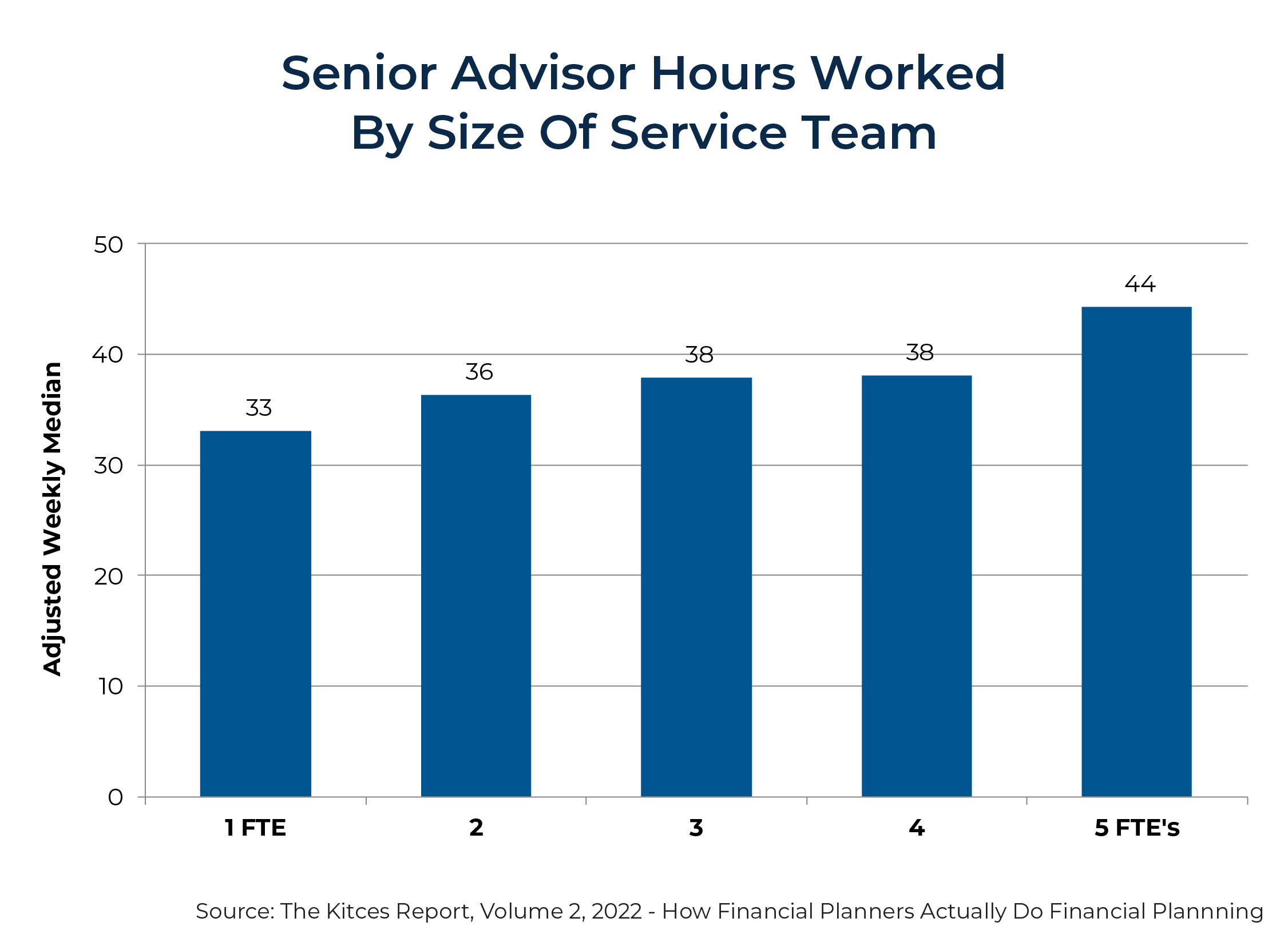
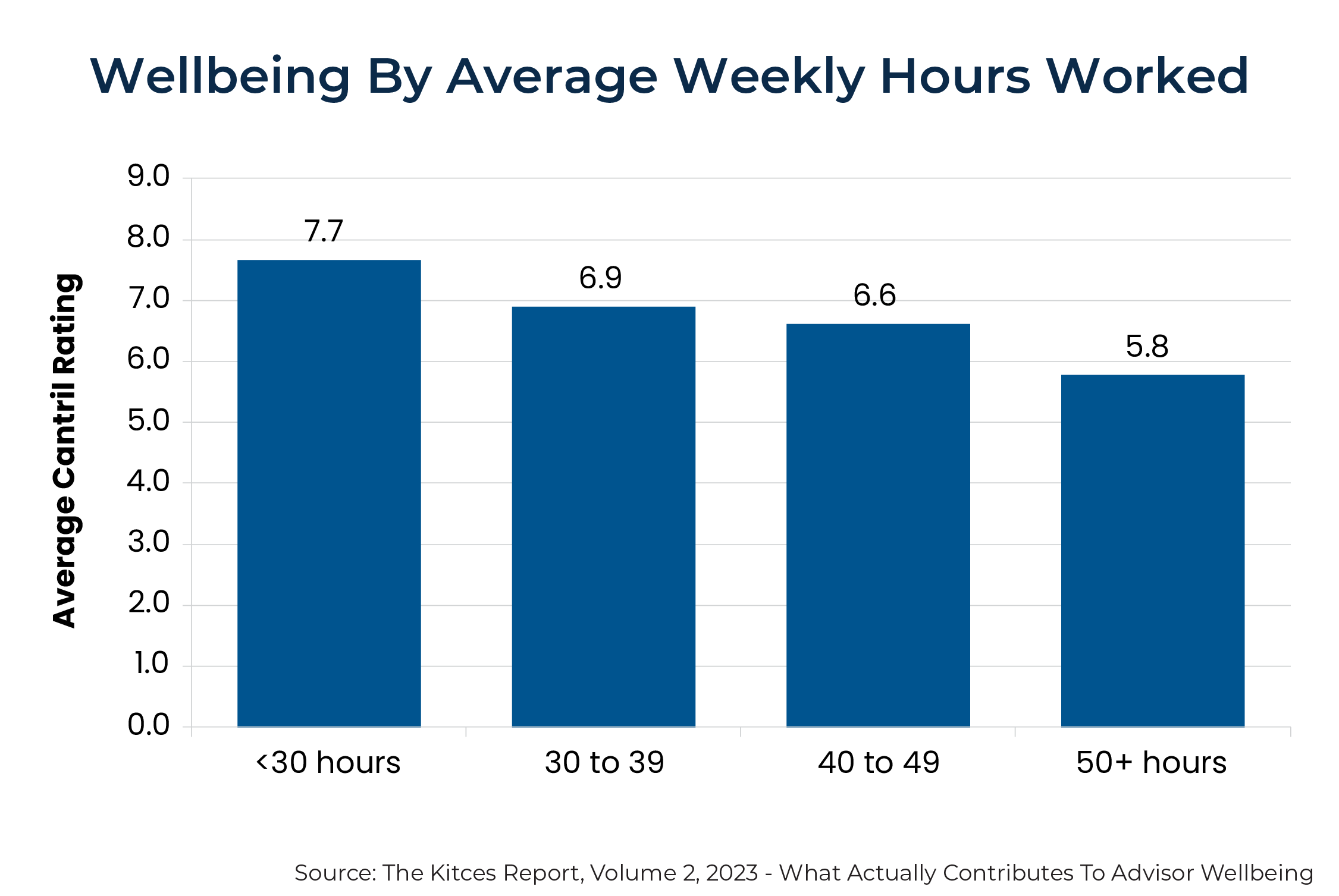
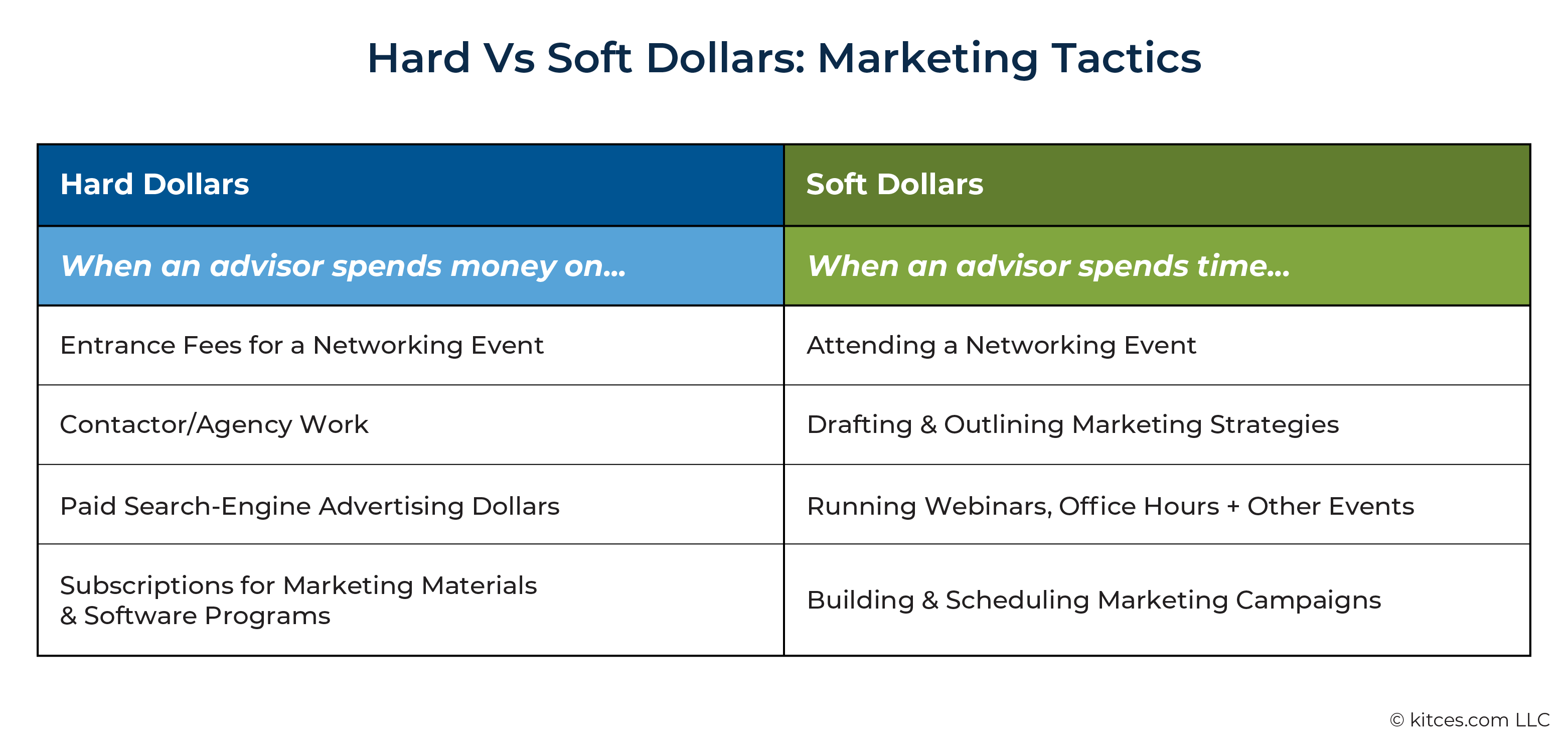
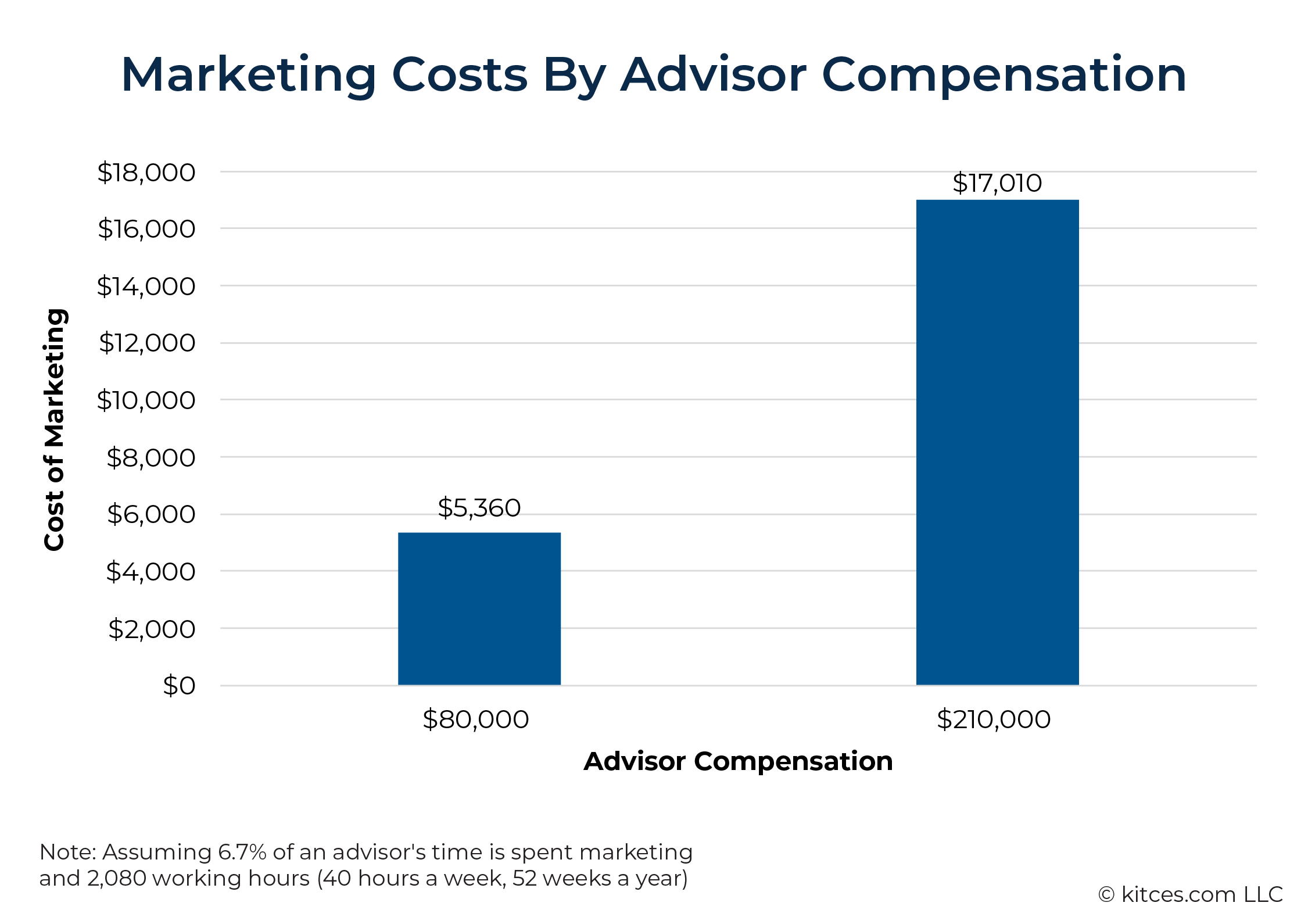
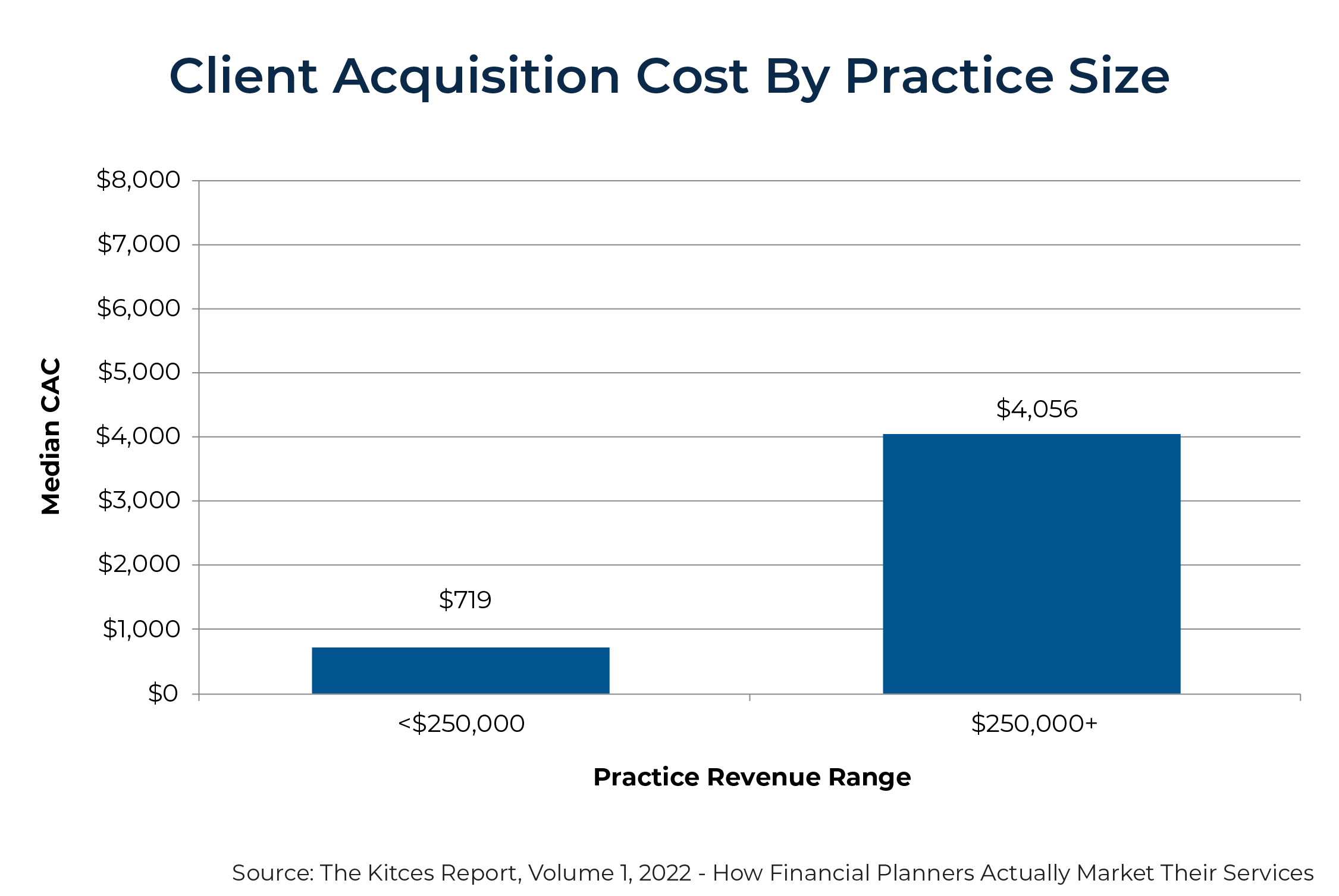
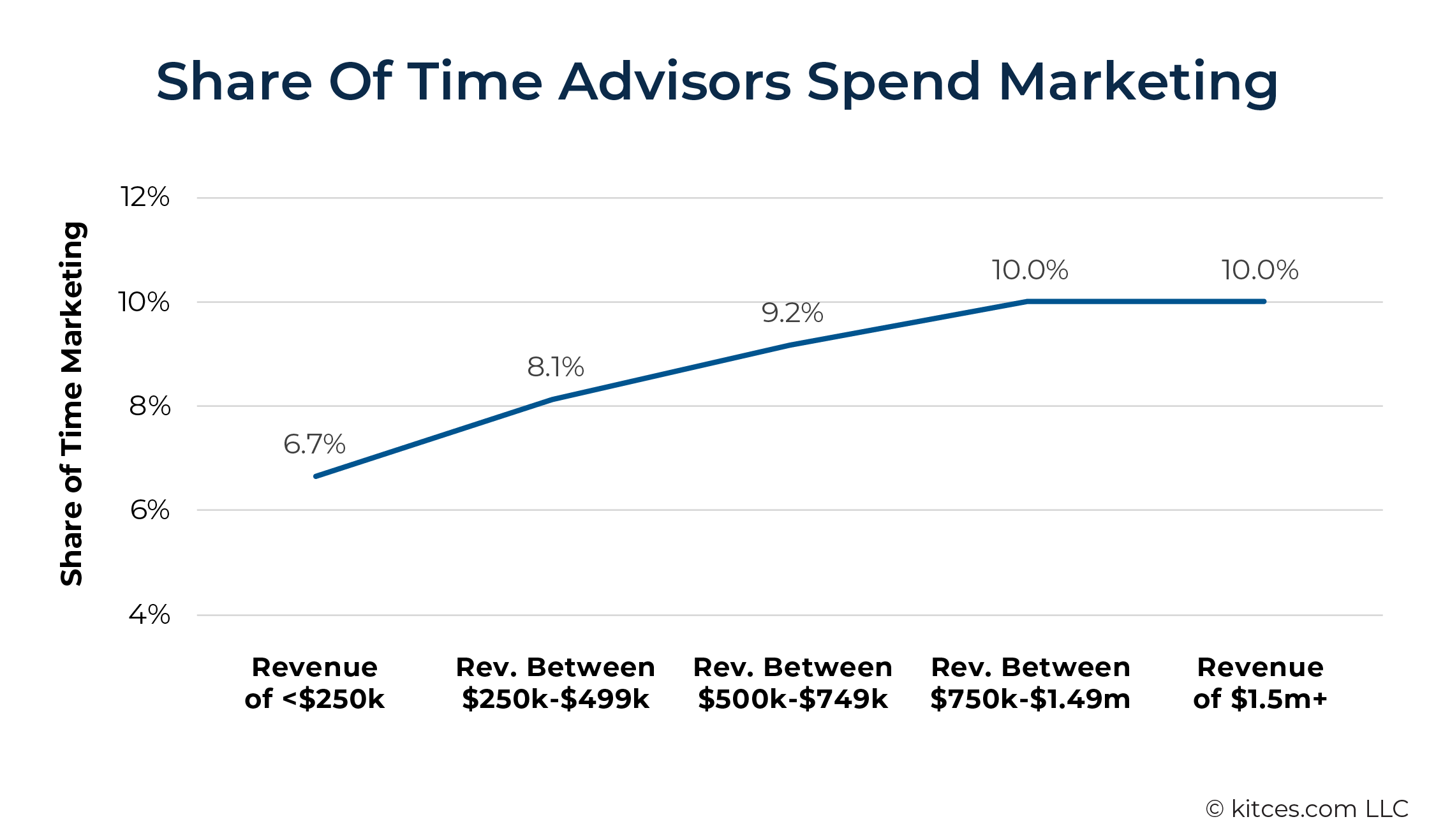
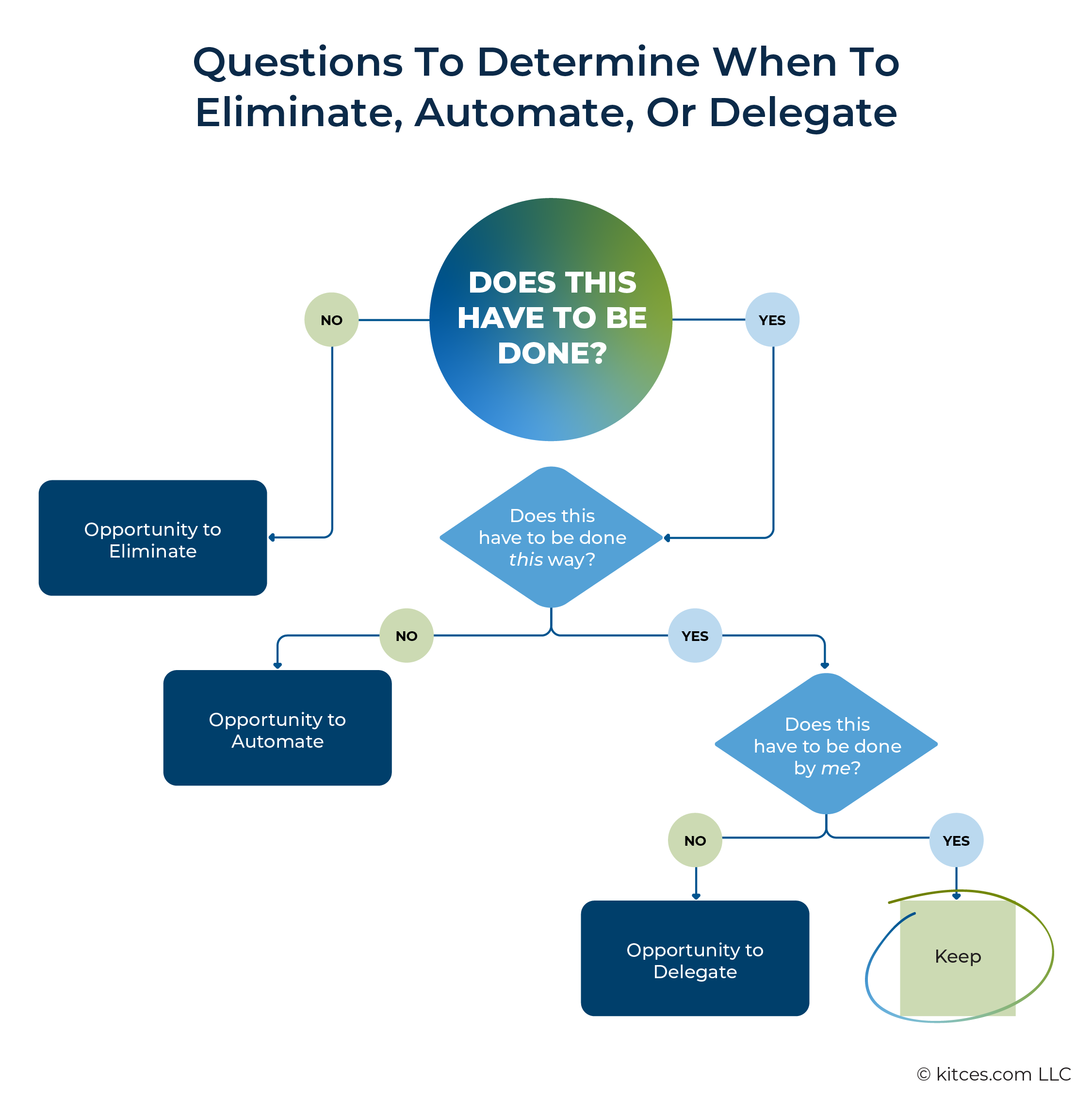
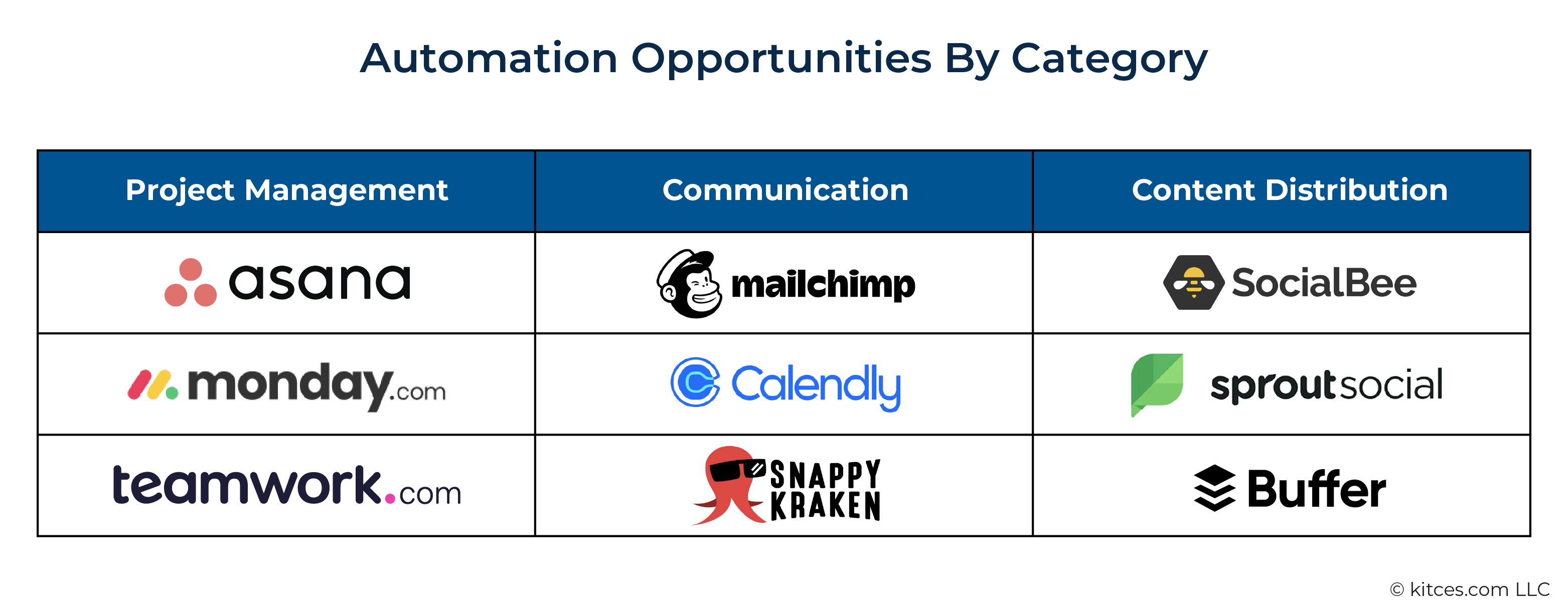
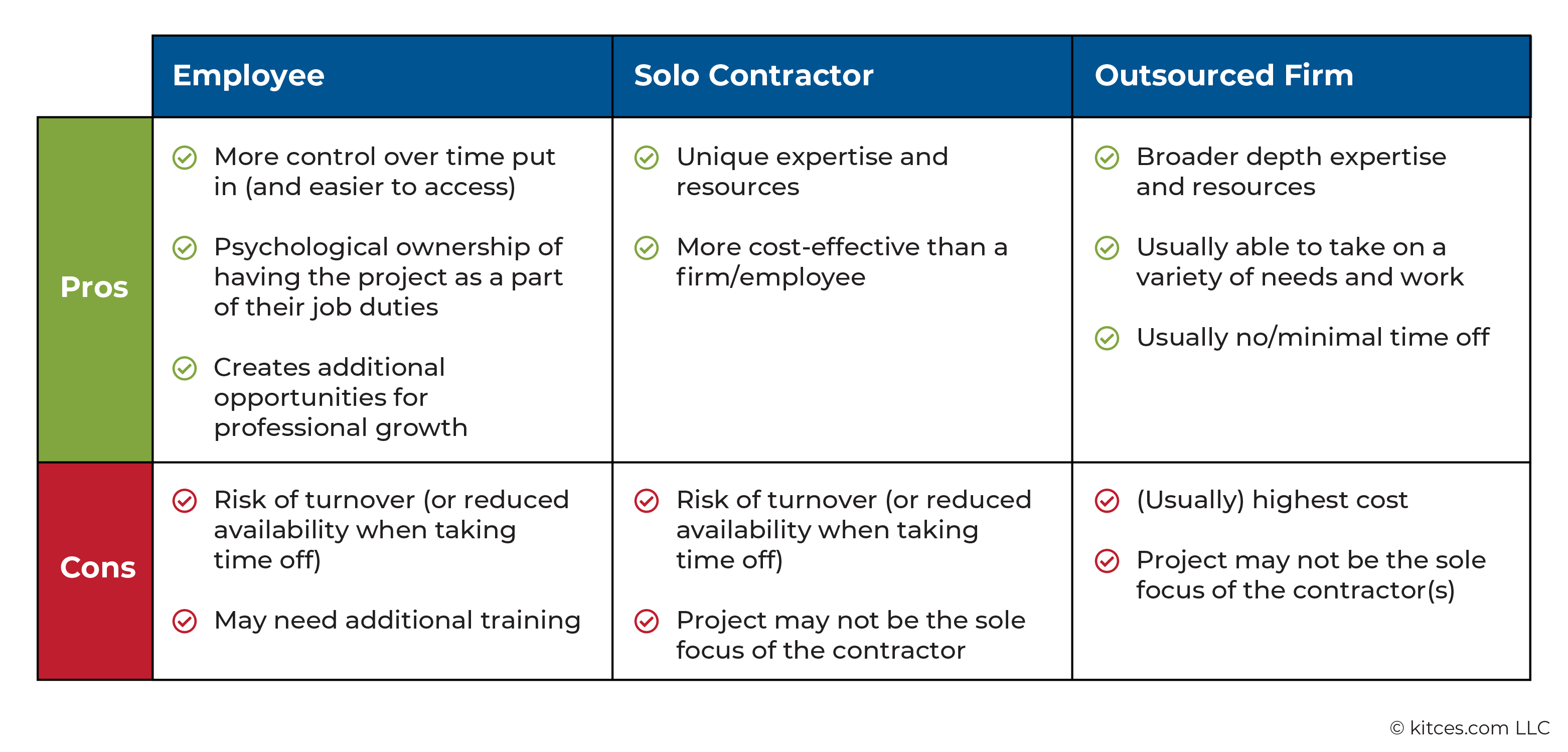



Leave a Reply